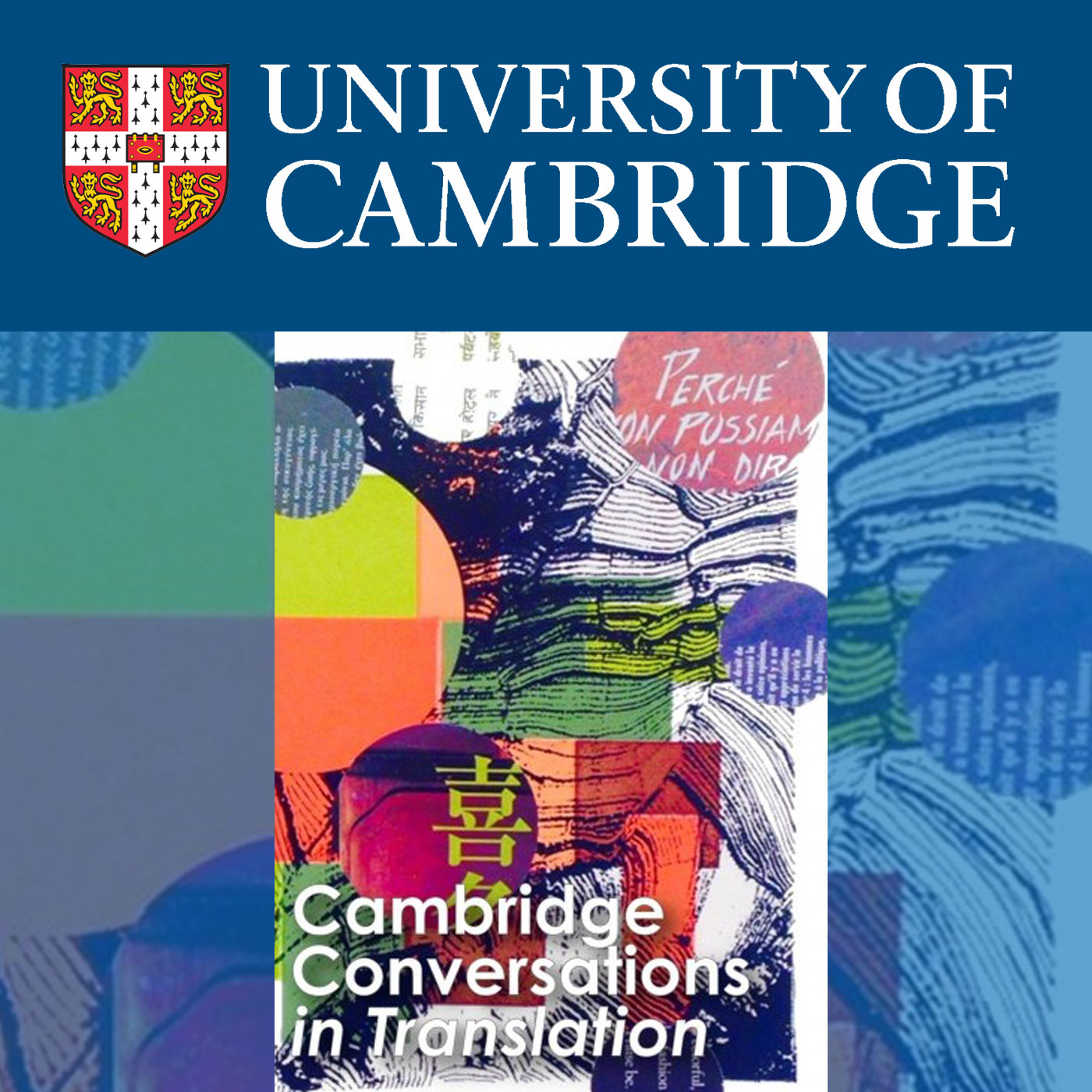Cambridge Conversations in Translation - 25 May 2016 - Translation and Music (Panel)
Duration: 1 hour 57 mins
Share this media item:
Embed this media item:
Embed this media item:
About this item

| Description: |
Lucile Desblache (Professor of Translation and Transcultural Studies, University of Roehampton)
Andrew Jones (Selwyn College, Cambridge) Judi Palmer (Former Surtitle Co-ordinator, Royal Opera House, Covent Garden) Rachel Godsill (Soprano) Music may be a universal ‘language’ (of some sort), but as an art form it is certainly embedded in particular cultural and textual contexts. The distinctive challenges of ‘music-linked translation’ (Golomb 2005) have only recently started to receive focused scholarly attention. This is surprising since these challenges deeply inform our understanding of how translation adapts and transforms itself when constrained by non-linguistic structural forms (Gorlée 2005; Susam-Sarajeva 2008; Mateo 2012). The translation of texts that provide the basis for opera libretti, choral works, song texts, and the like, must necessarily accommodate the various non-verbal visual, musical, and emotional elements that are essential components of any given performance (Desblache 2007; Virkkunen 2004; Minors 2013). Consequently, rhythmic, melodic, and harmonic constraints sometimes powerfully delimit a purely semantic engagement with the import of the sung utterance. The precise nature of the constraints varies greatly, though, depending upon the specific purpose of the translation. More ‘literal’ renderings may be appropriate for programme notes and CD booklets, while more tightly restricted music-linked translations may be required as performance texts. Consequently, there are ongoing debates about whether or not opera libretti should be translated in an attempt to increase the accessibility of the genre, and there are also diverging views about which translation strategies should be preferred. The definitions of notions such as ‘musicality’, ‘singability’ and ‘performability’ remain troublesome, the location of the blurred boundaries between translation, adaptation, rewriting, re-creation is uncertain, the changing relationships between audience, language, and music are problematical, and the issue of the ‘(in)visibility’ of the translator remains a perplexing one. In addition, there is the important topic of surtitling, which alone prompts a careful consideration of the many practical, theoretical, and technical possibilities in the context of music-linked translation. The panel discussion will enable academics and professional translators to consider how music-linked translation practices have differed over the centuries, while also providing a chance to reflect upon current conventions. |
|---|
| Created: | 2016-06-13 09:20 |
|---|---|
| Collection: | Cambridge Conversations in Translation |
| Publisher: | University of Cambridge |
| Copyright: | Glenn Jobson |
| Language: | eng (English) |
| Distribution: |
World
|
| Keywords: | CRASSH; Conversation and Translations; Lucile Desblache; Andrew Jones; Judi Palmer; Rachel Godsill; |
| Explicit content: | No |
| Abstract: | Lucile Desblache (Professor of Translation and Transcultural Studies, University of Roehampton)
Andrew Jones (Selwyn College, Cambridge) Judi Palmer (Former Surtitle Co-ordinator, Royal Opera House, Covent Garden) Rachel Godsill (Soprano) Music may be a universal ‘language’ (of some sort), but as an art form it is certainly embedded in particular cultural and textual contexts. The distinctive challenges of ‘music-linked translation’ (Golomb 2005) have only recently started to receive focused scholarly attention. This is surprising since these challenges deeply inform our understanding of how translation adapts and transforms itself when constrained by non-linguistic structural forms (Gorlée 2005; Susam-Sarajeva 2008; Mateo 2012). The translation of texts that provide the basis for opera libretti, choral works, song texts, and the like, must necessarily accommodate the various non-verbal visual, musical, and emotional elements that are essential components of any given performance (Desblache 2007; Virkkunen 2004; Minors 2013). Consequently, rhythmic, melodic, and harmonic constraints sometimes powerfully delimit a purely semantic engagement with the import of the sung utterance. The precise nature of the constraints varies greatly, though, depending upon the specific purpose of the translation. More ‘literal’ renderings may be appropriate for programme notes and CD booklets, while more tightly restricted music-linked translations may be required as performance texts. Consequently, there are ongoing debates about whether or not opera libretti should be translated in an attempt to increase the accessibility of the genre, and there are also diverging views about which translation strategies should be preferred. The definitions of notions such as ‘musicality’, ‘singability’ and ‘performability’ remain troublesome, the location of the blurred boundaries between translation, adaptation, rewriting, re-creation is uncertain, the changing relationships between audience, language, and music are problematical, and the issue of the ‘(in)visibility’ of the translator remains a perplexing one. In addition, there is the important topic of surtitling, which alone prompts a careful consideration of the many practical, theoretical, and technical possibilities in the context of music-linked translation. The panel discussion will enable academics and professional translators to consider how music-linked translation practices have differed over the centuries, while also providing a chance to reflect upon current conventions. |
|---|---|

